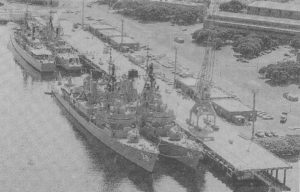- Author
- A.N. Other and NHSA Webmaster
- Subjects
- History - general
- Tags
-
- RAN Ships
- HMAS Stirling (Shore establishment)
- Publication
- March 1994 edition of the Naval Historical Review (all rights reserved)
History


HMAS STIRLING was selected to honour the name of Captain James Stirling, Royal Navy, the naval officer who landed on Garden Island in 1827 and returned in June, 1829 to found not only the first European settlement in Western Australia, but also the first free colony anywhere in Australia. Stirling’s makeshift camp was set-up on the craggy rock outcrop on the eastern side of the island which today is known as Cliff Head and is the site of a memorial. HMAS Stirling’s crest is based on the Stirling family coat-of-arms.
In a report dated April, 1827, Captain James Stirling stated to Governor Darling: “I there found reason to admire a magnificent sound between the island (Garden Island) and the main possessing great attractions for a sailor in search of a port; … I saw the value of the position too strongly not to resolve upon its exploration.”
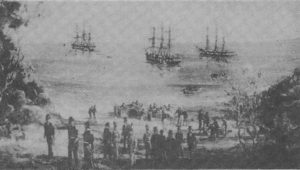
The first record of Garden Island appeared on a Dutch map of 1700 after William Vlamingh’s three-ship flotilla visited nearby Rottnest Island some four years before. A French scientific expedition of 1801 to 1802 under the command of Captain Nicholas Baudin named the island “Isle of Buache” after the then hydrographer of the French Navy. The island was renamed by Captain Stirling in March, 1827.
The idea of a naval facility in Cockburn Sound is not new. In 1911, after the completion of a report by Admiral Henderson, RN, construction began on a naval base on the mainland near Woodman Point. The project was abandoned after World War I.
Garden Island has long had a military presence with the Australian Army occupying the island during World War I, and again in World War II when numerous coastal gun batteries were deployed around the island as part of the fixed defences for the Port of Fremantle. During the second world conflict the island was also the home of the seaborne arm of Z-Force where top secret submersibles and midget submarines carried out training.
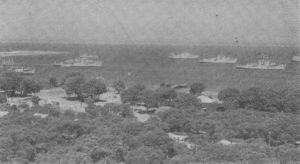
Between 1945-56, Careening Bay, today the site of HMAS Stirling, was the home of the Fremantle Detachment of the Royal Australian Navy’s Reserve Fleet. As many as eleven warships and their support vessels were laid-up in the bay.
Garden Island was for many years a popular holiday destination with cottages and shacks scattered along its shores, the main area being around Careening Bay.

Fleet Base West
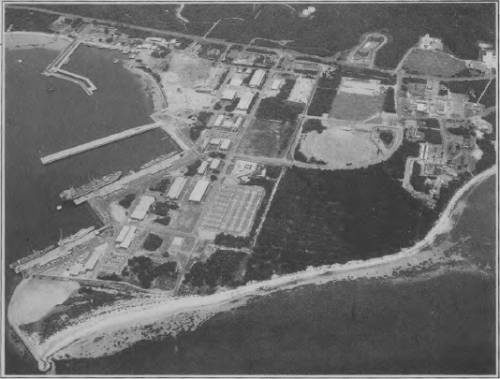
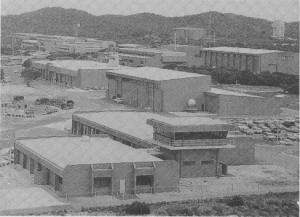
The planning of HMAS Stirling began in 1969 after the tabling of a feasibility study into the use of Garden Island as a naval base. The 4.2 kilometre causeway linking the island with the mainland was completed in June, 1973. Construction of HMAS Stirling’s wharves and workshops began in early 1973 and accommodation in 1975 with HMAS Stirling being formally commissioned on July 28, 1978.
The fragility of Garden Island and its environment had been recognised and some 50,000 indigenous trees and shrubs were planted to stabilise the soil and enhance the wildlife’s habitat.
Since its commissioning HMAS Stirling has expanded enormously within its existing boundaries and has seen buildings such as the Submarine Escape Training Facility – one of only six in the world and the only one in the southern hemisphere constructed.
